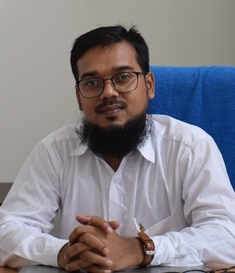Latest Articles
Original Research Article
ABSTRACT
In the implementation of natural disaster management operations, one of the primary considerations is the process of distributing logistical aid to disaster-struck locations. For logistics management to be beneficial and in accordance with needs, standardization of disaster management logistics is necessary. One of the natural disaster management operations involving Air Squadron 32 was the response to the 2019 Lombok earthquake. In the logistics distribution process, Air Squadron 32 still encountered various problems and obstacles related to the implementation of BNPB Regulation Number 23 of 2014 concerning the Standardization of Disaster Management Logistics. The problem phenomenon that emerged was the weather factor, which could hamper the flight of the C-130 aircraft, resulting in a longer distribution time. The purpose of this study is 1) To describe and analyze the implementation of the BNPB Regulation Number 23 of 2014 concerning Standardization of Disaster Management Logistics in the distribution of logistics for the Lombok Island Earthquake Disaster in the Air Squadron 32 area. 2) To describe and analyze the obstacles and supporters in the implementation of the BNPB Regulation Number 23 of 2014 concerning Standardization of Disaster Management Logistics in the distribution of logistics for the Lombok Island Earthquake Disaster in the Air Squadron 32 area. The data analysis technique uses three components, namely 1) reducing data by summarizing or selecting the main points from the data obtained, 2) the reduced data is then presented in the form of a brief description, and 3) after presenting the data, the author concludes. To test the validity of the data, the author employs triangulation by using different data collection techniques to obtain data from the same source.
ABSTRACT
This study examines the transition from silence to public speech in the context of breast cancer in Côte d’Ivoire, analysing the mechanisms of destigmatisation and the dynamics of collective meaning-making. The central issue concerns the social and cultural regulation of women’s discourse and its impact on the visibility and social representation of illness. The research interrogates the collective and symbolic strategies through which women negotiate their identities, recalibrate the boundaries between the intimate and the public sphere, and transform the social gaze directed at their embodied experiences. Grounded in a qualitative methodology combining narrative interviews and direct observation, the analysis reveals that the discursive articulation of the intimate catalyses solidarity, self-affirmation, and bodily reappropriation. The discussion highlights the constitutive tension between stigmatisation, female subjectivation, and self-determination, demonstrating how collective speech operates as a vector of symbolic emancipation and identity reconfiguration. In conclusion, shared narration emerges as a lever for social transformation, simultaneously producing new forms of visibility and recognition for women confronting illness.
Original Research Article
ABSTRACT
Today, the issue of HIV/AIDS remains of pressing concern. With one of the highest prevalence rates in West Africa, Côte d’Ivoire ranks among the countries most severely affected by the HIV/AIDS pandemic. This study seeks to analyse the sexual practices and risk behaviours associated with HIV/AIDS among young people working and living in the Abobo scrapyard. The research is based on a mixed-methods design, combining questionnaire surveys and semi-structured interviews conducted with two hundred and nine (209) participants, including one hundred and thirty-two (132) men and seventy-seven (77) women. The findings reveal multiple risk behaviours likely to increase the exposure of young people in the scrapyard environment to HIV infection. Sexual inexperience coupled with heightened curiosity emerges as a major factor in the propagation of the virus. Although the condom is recognised as the most effective means of protection against HIV/AIDS, the study shows that its use is predominantly motivated by the fear of unintended pregnancy rather than by concern for disease prevention. Moreover, a considerable number of respondents perceive HIV/AIDS as a mere illusion or social construct. Qualitative interviews further indicate that commercial sex work is a widespread and structured activity within the Abobo scrapyard, thereby reinforcing the context of vulnerability and risk.
Original Research Article
ABSTRACT
This study investigates the continuity of Romanian culture through its central pillars: language, folklore, spirituality, and artistic expression. It argues that Romanian national identity is not static but an evolving and adaptive system that has persisted through political change, foreign influence, and globalization. Drawing on verified data from UNESCO’s Intangible Cultural Heritage lists, the Romanian Ministry of Culture’s national digitization initiatives (RO-CULTURA Programme, 2023–2026), Europeana’s country report on Romania (2025), and institutional archives, the research analyzes how traditional and modern mechanisms sustain cultural resilience. Using a qualitative, historical-analytical approach combined with digital ethnography, the study examines how linguistic unity, folk traditions, spirituality, and digital innovation reinforce cultural identity. Findings show that the Romanian language remains the unifying foundation of national consciousness; traditional customs such as Călușul, Doina, Horezu ceramics, and Mărțișor (recognized by UNESCO) have adapted to modern life and digital representation; and Eastern Orthodoxy continues to function as a moral and aesthetic anchor of Romanian society. The growing role of digital preservation, through platforms such as Europeana and the Ministry of Culture’s e-Heritage portal, demonstrates that technology now serves as an instrument of continuity rather than disruption. The study concludes that Romania’s cultural resilience results from the interaction between linguistic heritage, traditional creativity, spiritual revival, and digital innovation. This synthesis of ancient and modern elements offers a sustainable model for safeguarding intangible cultural heritage in the digital age and contributes to UNESCO’s broader objectives of preserving cultural diversity worldwide.
ABSTRACT
Mental health is increasingly recognized as a foundational element shaping the growth trajectories of African youth and influencing broader continental socioeconomic outcomes. Given that over 60% of many African nations’ populations are aged 15 to 24, the prevalence of mental disorders particularly depression and anxiety poses profound challenges to individual potential and collective development. This article synthesizes recent empirical evidence demonstrating the extent of mental health challenges among African youth, articulates their multifaceted impacts on education, employment, and social integration, and situates these within systemic barriers such as under-investment, cultural stigma, and policy neglect. The analysis further explores emerging regional initiatives and evidence based intervention models that advance pathways to resilience and productivity. Recommendations emphasize integrated policy frameworks, sustained resource allocation, and culturally responsive strategies to harness Africa’s demographic dividend sustainably.
Original Research Article
ABSTRACT
The Nile River Basin, spanning eleven countries and supporting over 300 million people, faces escalating hydro-political tensions driven by climate change, infrastructure development, and regional power asymmetries. South Sudan, which contains approximately 2.5% of the basin's water resources, remains highly vulnerable due to internal conflict, institutional weaknesses, and limited influence in regional negotiations. Understanding how hydro-conflicts impact water governance is critical for promoting sustainable development and climate resilience in this fragile context. This study examines the influence of hydro-conflicts on water governance effectiveness in South Sudan, emphasizing institutional capacity, regional power dynamics, and environmental policy. It aims to identify strategic pathways for strengthening governance frameworks, fostering cooperation, and addressing the root causes of water insecurity. Using a qualitative comparative case study approach, the research integrates semi-structured interviews with 75 stakeholders including government officials, regional organizations, and local communities and systematic document analysis of policy frameworks and institutional reports. Thematic content analysis, supported by NVivo software, was employed to identify patterns and relationships. Theoretical frameworks such as hydro-hegemony, institutional theory, and social-ecological systems guide interpretation. Comparative insights from successful basin models like the Rhine were also incorporated. Historical colonial treaties, such as the 1929 and 1959 agreements, continue to favor upstream states like Ethiopia and Egypt, marginalizing South Sudan. Institutional fragmentation, with over seven overlapping agencies operating on just 2.3% of the national budget, hampers effective management. Regional power asymmetries, exemplified by Ethiopia’s construction of the Grand Ethiopian Renaissance Dam (GERD), which aims to generate 6,450 MW of electricity,
Original Research Article
ABSTRACT
This study critically examines the role and effectiveness of faith-initiated peacebuilding initiatives in South Sudan’s ongoing political conflicts. Since gaining independence in 2011, South Sudan has experienced persistent violence, with over 400,000 deaths and more than 4 million internally displaced persons (IDPs) as of 2023. Despite numerous peace agreements, including the 2015 Agreement on the Resolution of the Conflict in South Sudan (ARCSS), violence has resurged, exposing the fragility of peace processes and highlighting the need for alternative peacebuilding approaches. This research explores how faith-based organizations (FBOs) and religious leaders have contributed to peace efforts, leveraging their moral authority, community networks, and traditional reconciliation practices. The study employs a qualitative, multi-sited case study methodology across three regions: Juba, Jonglei State, and Central Equatoria, involving approximately 950 participants, including church leaders, government officials, traditional authorities, and community members. Data collection involved 91 semi-structured interviews, 16 focus group discussions, archival research, and discourse analysis, analyzed through thematic coding following Braun and Clarke approach. Empirical reviews included recent studies that documented faith-based interventions, revealing a median success rate of approximately 64–73% in mediating inter-ethnic disputes, with significant variations tied to community involvement, traditional leader participation, and resource mobilization. Key findings indicate that faith actors have played pivotal roles in high-level mediation, national advocacy, grassroots dialogue, and international ecumenical diplomacy. For example, the 1999 Wunlit Peace Conference, mediated by faith leaders, successfully fostered inter-ethnic reconciliation between the Dinka and Nuer communities, illustrating the potential of religious efforts to reduce violence and promote social cohesion. Howe


















